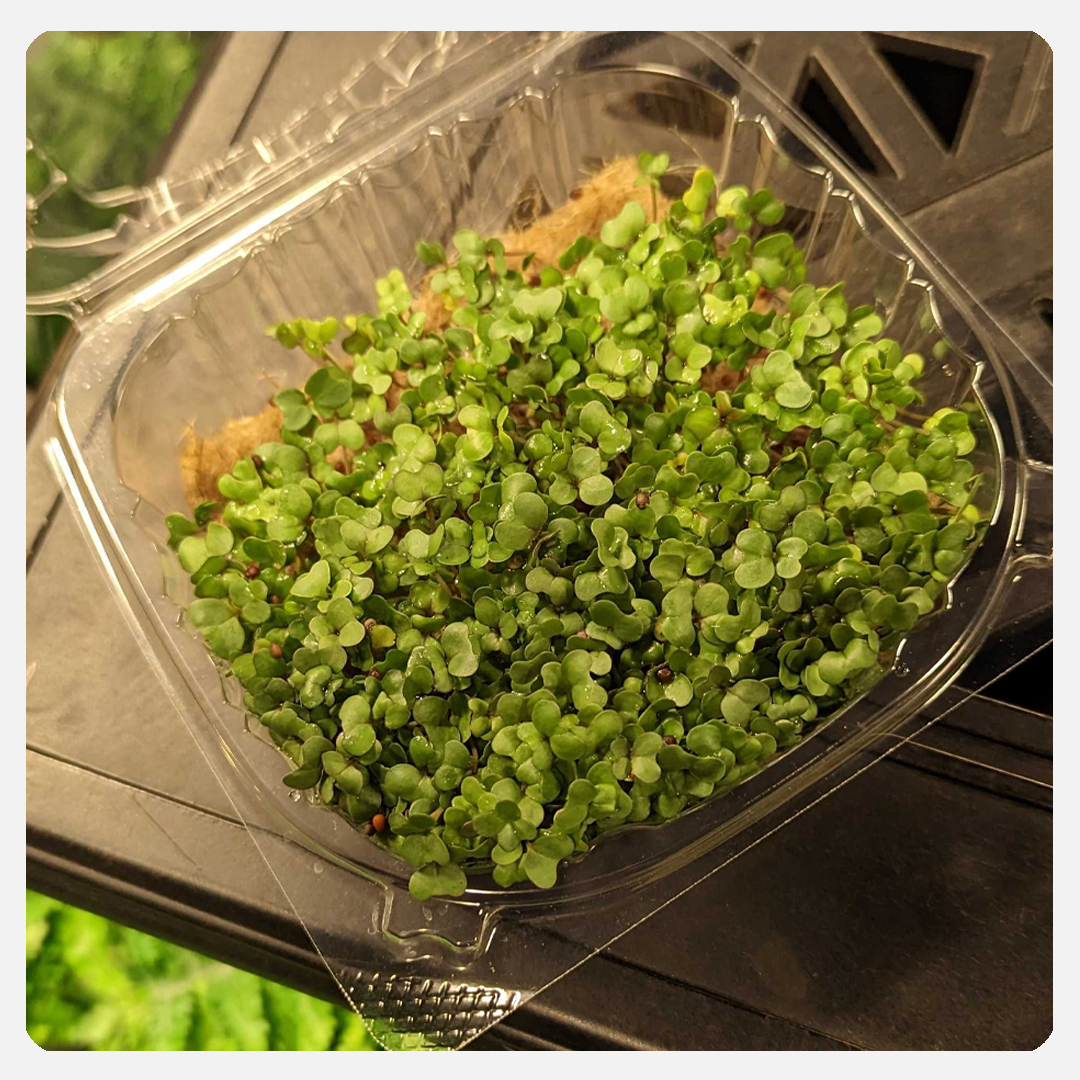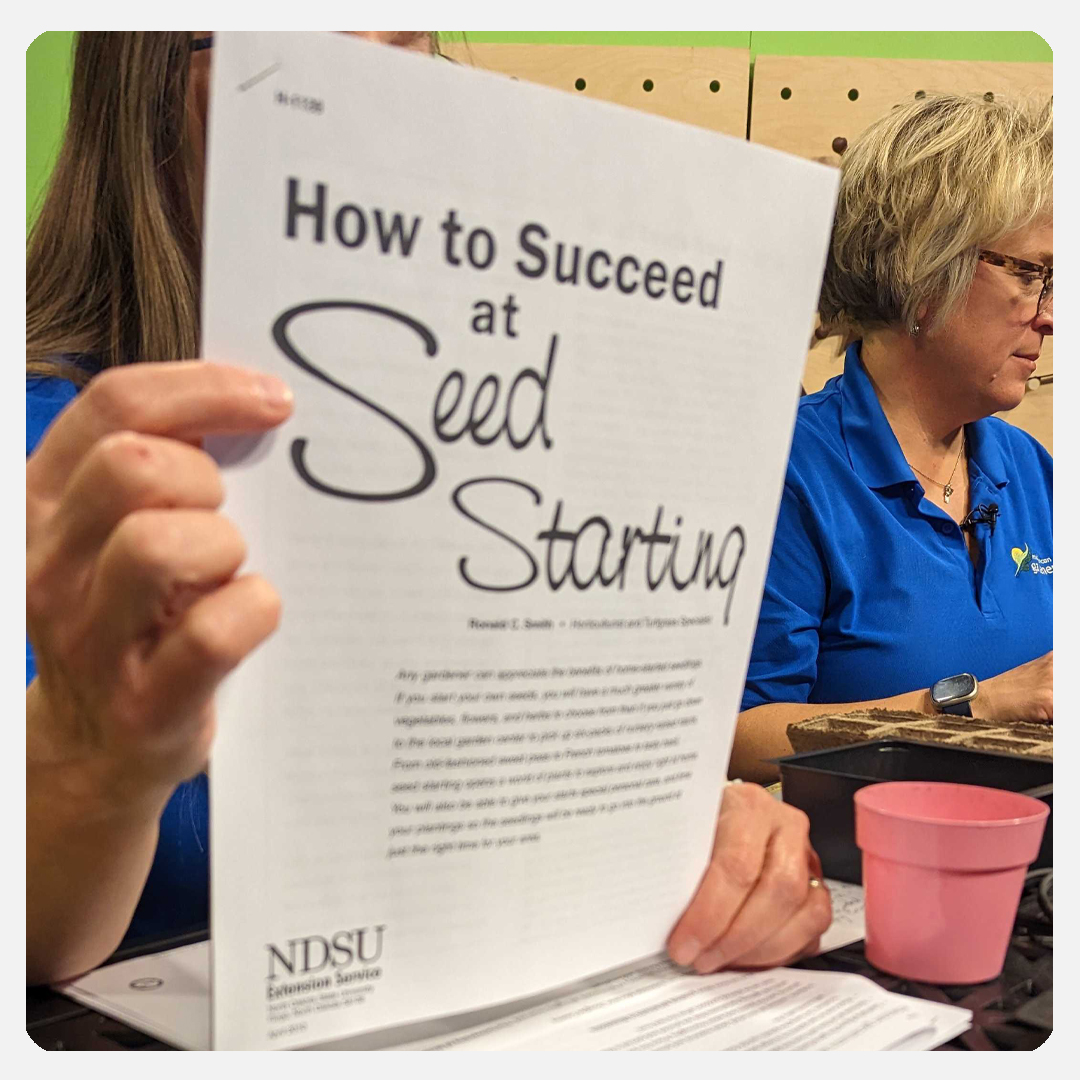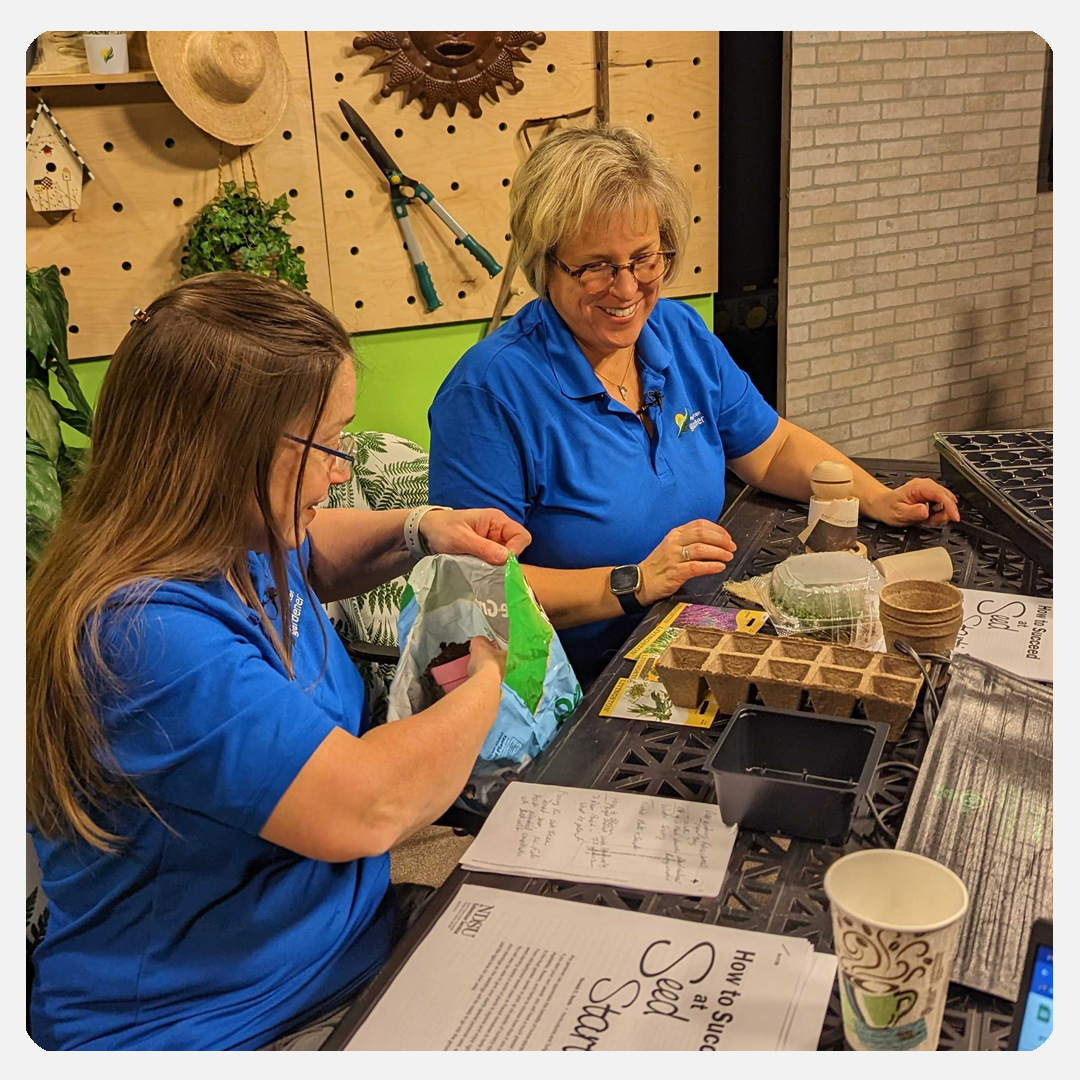“Vegetable Confetti:” Microgreens for Mega Joy
It may be February, but Jennifer Nelson has already got some new greens sprouting. It’s her microgreens! These vitamin and nutrient packed plants are the perfect way to brighten up a salad, layer in a sandwich, garnish a drink, season a soup, or add to a stir fry. Not only are they incredibly healthy, but they are so satisfying to grow, especially this time of year.

Microgreens are immature or “baby” plants that are harvested generally within a month of germination. Sprouts develop from seeds in 3-5 days and are later considered microgreens in 1-2 weeks.The stem, seed leaves, and first set of true leaves are all edible.
Make sure you purchase microgreen specific seed, as it has been monitored and quality checked for microorganisms that might make us sick. All you need is a container (we love to re-use our recycling!), a hemp mat (or substitute with a paper towel), and a windowsill!
Commonly grown varieties of Microgreens include: Amaranth, Arugula, Beets, Basil, Cabbage, Celery, Chard, Chervil, Cilantro, Cress, Fennel, Kale, Mustard, Parsley, Radish, and Sorrel.
We’re still planning our seed starting, and Jennifer Fishburn reminds us that quality seed starting mix is the most important element to a successful seed starting venture. If you’re going to start from seed, make sure you invest in good quality soil and grow lights. Be sure to place your lights as close to your seedlings as possible. This prevents them from getting leggy.
You can purchase seed starting containers, use toilet paper rolls, or even roll your own containers from newspapers. Just make sure you remove the paper prior to planting because it will not break down into the soil fast enough after planting. You also need the seedlings to be consistently moist until they germinate. Use a cover or a dry cleaning bag to help contain that moisture, along with heat. The Jennifers recommend turning your grow lights on right after planting so that you don’t miss them sprouting. A fan also helps simulate wind and creates stronger seedlings.
Finally, before placing your seedlings in the ground, make sure you harden them off. Do not take them directly out to the garden. Instead, put them outside in the shade, and then bring them back in at night. After a week, you can plant your seedlings in your garden, but wait until the temperatures are warm enough at night.

Here is a link to a wonderful seed starting guide from North Dakota State University which is very comprehensive and helpful:
Jennifer Nelson and Jennifer Fishburn also answer your questions about overwintering geraniums, growing plants from starts, new houseplants on the scene, how to get hoyas to bloom, oak tree pruning, and groundcover under river birch trees.


As always, if there’s a question you’d like to ask one of our panelists, please send us an email at yourgarden@gmail.com com, or you can find us on Facebook and Instagram.



